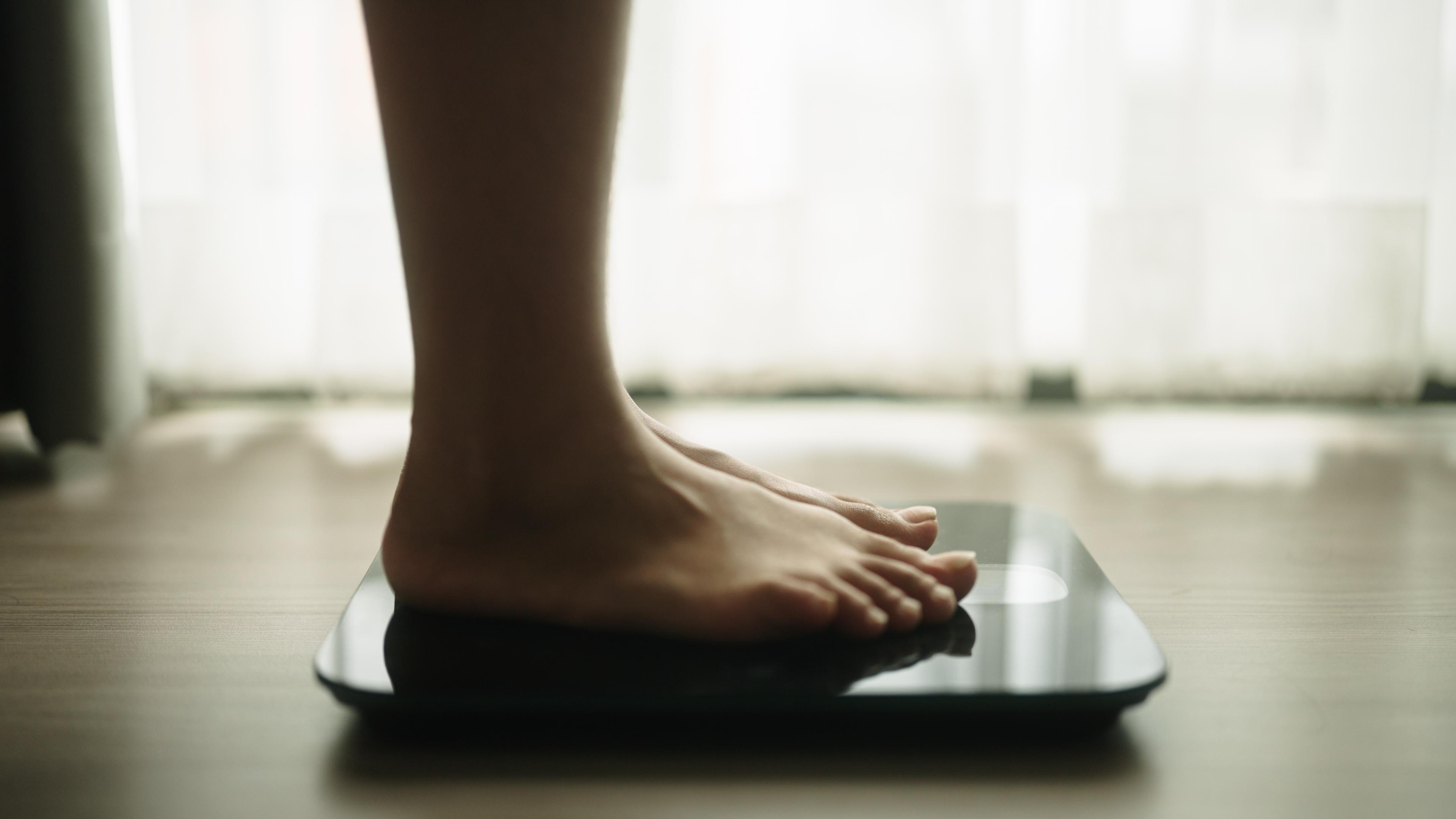
Many times, people hear about bulimia when a celebrity opens up about their eating disorder history or tabloids make assumptions about a star's appearance. But the fact is, bulimia tends to be quite secretive—people with this eating disorder often try to hide the behaviors due to feelings of shame and guilt, leading many people affected to feel like they’re alone in their struggles. Yet in reality, about 2 percent of women and 0.6 percent of men will develop bulimia at some point in their lives, which equates to hundreds of millions of people worldwide.
Although bulimia can be difficult to overcome, help is out there, and lasting recovery is possible with the right treatment. The first step to recovery is learning the facts about bulimia. Here’s everything you need to know—from symptoms to causes to treatment and more.
What is bulimia nervosa?
Bulimia nervosa, usually referred to as just bulimia, is an eating disorder characterized by episodes of binge eating followed by purging behaviors to “get rid of” the food. During a binge, a person consumes a large amount of food in a short period of time, often with a sense of being out of control. Afterward, someone suffering from bulimia can feel overwhelmed by feelings of guilt, disgust, or fear. These painful emotions then drive them to seek relief in the form of compensatory purging behaviors.
Purging is commonly thought of as vomiting—and it can be. But it also includes any behavior that's done to try to get rid of or make up for calories consumed. This may include taking laxatives or diuretics, fasting or meal skipping, or excessive exercise. Unlike with anorexia (including anorexia binge-purge subtype), people suffering from bulimia will purge explicitly to compensate for calories consumed during a binge.
Most medical professionals diagnose bulimia nervosa if someone binges and purges at least once a week for three months.
Additionally, people with bulimia feel an intense need to try to achieve a certain weight or shape. This striving for a certain body “ideal” often results in food restriction that can lead to insufficient nutrition and, in turn, drive binge eating. Over time, the pattern of bingeing and purging can become compulsive, leaving the sufferer feeling trapped and hopeless.
What are the signs and symptoms of bulimia?
Like all eating disorders, bulimia often hides in secrecy. However, you may notice changes in behavior as well as physical signs that indicate someone is struggling. Below are some common bulimia nervosa symptoms.
Behavioral symptoms
- Binge eating followed by purging (vomiting, use of laxatives, excessive exercise)
- Eating in secret and hiding food (you may notice food wrappers or missing food items)
- Frequently going to the bathroom after meals
- Avoiding social situations that involve food
- Exercising more often, even if injured or sick
- Showering after meals
Psychological symptoms
- Preoccupation with weight and body shape or size
- Fear of weight gain
- Guilt, shame, or disgust about their eating habits
- Depression
- Anxiety
- Substance abuse
Physical symptoms
- Dental problems, such as damage to enamel (due to vomiting)
- Scrapes, scars, or bruises on hands and fingers (due to self-induced vomiting)
- Puffy or swollen area around the cheeks (due to vomiting)
- Irregular menstrual cycles
What causes bulimia nervosa?
Eating disorders are complex, brain-based mental illnesses. Rather than having one single cause, bulimia has a strong genetic component and is influenced by social, cultural, and environmental factors.
Genetic factors
Genes play a significant role in a person’s vulnerability to developing an eating disorder. Studies have found that genetics increase the risk of bulimia nervosa, as well as behaviors and attitudes that contribute to disordered eating.
Environmental and social triggers
Genes are only part of the equation. Someone may be genetically predisposed, but never develop bulimia because nothing in their environment “turns on” that genetic expression; and similarly, someone may not have any genetic vulnerabilities but go on to develop bulimia due to their environment.
Everyone faces pressure to conform to society's unrealistic standards of body shape, size, and weight, and this alone can increase the risk of bulimia. These pressures can be even greater for certain people, including those who participate in appearance-based sports like wrestling, swimming, dancing, gymnastics, and figure skating, says Savannah Erwin, PhD, a clinical postdoctoral fellow at UNC's CEED (Center of Excellence for Eating Disorders). Having parents who are very focused on their weight and size may also be a factor.
Another potential cause of bulimia nervosa? Your home life and the physical and emotional pressures that you're exposed to. “For many people, weight stigma and experiences of trauma or bullying can exacerbate feelings of inadequacy caused by societal pressures, like unrealistic beauty standards,” says Angela Celio Doyle, PhD, Equip's VP of Behavioral Health Care. “This can create a perfect storm for developing bulimia.”
Psychological triggers
Studies have found changes in brain activity in people who have bulimia. Additionally, anxiety, depression, perfectionism, and low self-esteem may increase the risk of developing this eating disorder. “Bulimia often co-occurs with anxiety and depression. The cycle of bingeing and purging can increase feelings of shame and isolation, worsening mental health issues. It’s a vicious cycle that can be tough to break,” Celio Doyle says.
Risks and consequences of bulimia
Bulimia nervosa can affect someone's physical and mental health, as well as their relationships and quality of life. However, almost all of these negative repercussions can be reversed, and the sooner someone is treated for bulimia, the better their chances of reducing or eliminating these consequences.
Physical health risks
- Dental problems, such as cavities, tooth erosion, and pain
- Cardiac arrhythmias (or an abnormal rhythm of heart beats). This puts you at risk for cardiovascular disease, stroke, and heart attack.
- Gastroesophageal reflux disease (GERD)
- Irregular periods
- Kidney damage
Mental health consequences
- Anxiety
- Depression
- Feelings of guilt, shame, and loss of control
- Low self-esteem
Harm to quality of life
- Impaired relationships. Having bulimia can make you less engaged when you're around loved ones. For example, “while a person with bulimia might go to dinner and a movie with friends, they might spend the whole time at the movie thinking about how they will purge,” Erwin explains. This type of mental preoccupation can make it impossible to be present with others, which can harm your relationships.
- Inability to cope. “Builmia can also result in issues with emotional regulation, making it difficult to cope with other stressors in life,” Celio Doyle says.
Myths and misconceptions about bulimia
Despite increased awareness about eating disorders, certain myths about bulimia persist. Here are three misconceptions—and the reality they obscure.
Bulimia only affects young white women
“Eating disorders affect people of all shapes, sizes, races, gender, ages, and socioeconomic status,” Erwin says. “They don't discriminate.” For bulimia specifically, research shows that Black and Latinx adolescents have a higher risk but are less likely to be diagnosed (an example of how harmful stereotypes can be). And although the onset of bulimia nervosa peaks in late adolescence, it can occur throughout the lifespan. Bulimia is also more common in girls and women, but boys and men suffer, too. Lastly, transgender and gender non-conforming individuals likely have a heightened risk for bulimia, as data suggest rates of eating disorders for this group are five times higher than for their cisgender and gender-conforming peers.
Purging is an effective way to control weight
In addition to being incredibly harmful, purging often fails to control weight because the behavior backfires—it often leads to more bingeing and can disrupt metabolism, Celio Doyle explains. “The body can become more efficient at storing calories, and over time, people may end up gaining weight,” she says. “Additionally, purging can cause serious health complications and doesn’t address the emotional and psychological factors driving the disordered eating.”
Bulimia doesn't harm the health of people in larger bodies
Everyone with bulimia—regardless of their size—is at risk of the health consequences discussed above. People in larger bodies may in some way be at greater risk of harm, because some healthcare providers have a weight bias. They may not consider that someone with a bigger body may have an eating disorder, or they may not be well-educated about eating disorders. Still, even if someone doesn’t appear ill or isn’t medically “underweight”, bulimia needs to be treated as soon as possible.
How is bulimia nervosa treated?
There's no standard “bulimia nervosa treatment guide.” Rather, treatment for bulimia is personalized to the individual and their circumstances. In general, treatment typically includes a form of therapy, and may also involve nutritional counseling and medication. The goal is to reduce symptoms and behaviors, improve quality of life, and try to reverse or minimize any health consequences, like electrolyte imbalances and dental erosion.
Multidisciplinary approach
Bulimia impacts various aspects of a person's life, from their physical to their mental and emotional health, and one healthcare provider can't address all of this. To achieve lasting, sustainable recovery from bulimia, you need a team. This often includes:
- A medical provider who can screen for health complications and monitor those risks on an ongoing basis.
- A trained therapist who's experienced in treating bulimia to address the mental and emotional health components of the disorder.
- A registered dietitian to help with meal planning, nutrition education, and normalizing eating habits.
Evidence-based modalities
Different types of therapy have been proven to help reduce the symptoms of bulimia and improve quality of life. Some of the most widely-used evidence-based approaches to treating bulimia include:
- Family-based treatment: With FBT, patients’ family members are empowered to help their loved one normalize eating habits and stop purging behaviors. As eating patterns are normalized and disordered behaviors diminish, the patient begins to work with a therapist to address remaining symptoms, root causes, and any co-occurring conditions. With FBT, bulimia recovery happens at home. “By involving family members, FBT helps to strengthen communication and understanding, reduces secrecy, and fosters a supportive environment,” Celio Doyle says. “Families learn how to encourage positive behaviors and reinforce healthy habits, which can lead to better outcomes in recovery.”
- Dialectical behavior therapy: DBT helps people regulate their emotions and improve their relationships, key factors in managing bulimia. “Individuals learn emotional regulation, which helps them handle feelings that might trigger bingeing or purging,” Celio Doyle says. “They also learn distress tolerance, so they can cope with tough situations without resorting to disordered eating. Lastly, mindfulness techniques help them become more aware of their thoughts and behaviors, making it easier to make healthier choices.”
- Enhanced cognitive behavioral therapy: Specifically designed to treat eating disorders, CBT-E focuses on changing the negative thought patterns and behaviors that contribute to the disorder, Celio Doyle explains. “Patients learn to identify and challenge distorted beliefs about body image, food, and self-worth. CBT also encourages healthier eating habits and coping strategies, making it easier to manage urges to binge or purge.”
Medications
In some instances, a physician or psychiatrist may prescribe medication to help treat bulimia. Selective serotonin reuptake inhibitors (SSRIs) are commonly prescribed to treat depression and anxiety, and they also have been shown to reduce symptoms of bulimia nervosa in adults. Fluoxetine is FDA-approved for this use.
Virtual eating disorder treatment
These days, a lot of bulimia treatment and recovery can happen at home thanks to telehealth. Virtual eating disorder treatment is convenient since you don't have to take time to commute to an office, and it also makes evidence-based care more accessible. Research also shows that it's just as effective as traditional in-person treatment.
Recovery from bulimia nervosa: What to expect
Recovery from bulimia is a multidimensional journey, involving behavioral changes, physical rehabilitation, and emotional work.
The role of nutrition
Nutritional balance helps support mental clarity and reduce disordered eating behaviors. “Regular meals and snacks help stabilize mood and reduce urges to binge and purge, supporting overall recovery,” Celio Doyle says.
A registered dietitian can prevent you from falling into an eating rut that can undermine recovery. “They can help you come up with different ideas to meet your nutritional needs that don't feel redundant but also don't give the eating disorder room to pick and choose what it wants,” Erwin says.
Developing healthier coping strategies
“Identifying triggers and developing healthier coping strategies are key components of recovery, helping individuals manage stress without resorting to disordered eating,” Celio Doyle says.
Building a positive body image
People with bulimia tend to overvalue their physical appearance. Learning strategies to develop body acceptance and self-esteem helps reduce this harmful focus, Celio Doyle says. “It also helps people cultivate a healthier relationship with themselves, which supports long-term recovery,” she adds.
How to support a loved one with bulimia
If you're concerned that someone you love may have an eating disorder, you can be a source of support and encouragement to help them seek the professional care they need to recover. Although this will likely be a difficult conversation for both of you, you can do this. Here are some strategies to keep in mind.
Use “I” statements
“Approach the person with care and compassion,” Celio Doyle advises. “Use 'I' statements to express concern and avoid judgment. Let them know you’re there to support them, not to criticize.” Similarly, Erwin suggests sticking with the facts, expressing how you feel, and keeping things open-ended. This may mean saying something like, 'I'm concerned. I've noticed that you use the bathroom a lot after meals. Can you tell me what you're doing in there?'
Help them seek treatment
Bulimia treatment and recovery requires care from a team of professionals. Even if your loved one says they will stop on their own, it's incredibly difficult to overcome an eating disorder without help—they're simply that powerful and persuasive. So “encourage them to talk to a healthcare provider,” Celio Doyle says. “Offer to help them find resources or go with them to appointments, if they’re comfortable with that.”
And don't hesitate to intervene if you notice severe signs of distress, health complications, or if the person is in crisis, she adds.
Be there for them
“Bulimia can come with feelings of shame and guilt. So continue to show up for your loved one and love them as they are,” Erwin says. “Give them a safe place where they can tell you they're having a hard day or their eating disorder is really loud.” You can also ask what they need, which may mean sitting with them at meals or letting them call you anytime they need support. Lastly, educate yourself about bulimia so you can better understand what they’re going through.
If you're concerned that you or someone you love is dealing with bulimia, it's important to reach out for professional support. Talk to your doctor or schedule a consultation with an Equip team member.
FAQ
What is bulimia nervosa?
Bulimia nervosa is an eating disorder. People with bulimia engage in bingeing (eating a large amount of food in a short period of time) followed by compensatory purging behaviors (such as self-induced vomiting, excessive exercise, skipping meals, or using laxatives). They also overvalue how they look and feel compelled to achieve a specific weight or body shape.
How can bulimia affect someone's health?
Bulimia can affect someone's physical and mental health. It can lead to tooth erosion, gastroesophageal reflux disease (GERD), kidney damage, and abnormal heartbeats called cardiac arrhythmias, which increases the risk of cardiovascular disease, stroke, and heart attack. Psychologically, bulimia often co-occurs with anxiety, depression, and low self-esteem. And overall, it can decrease someone's quality of life.
How is bulimia treated?
Treatment for bulimia is multidisciplinary. Medical doctors can monitor and treat any health consequences. Therapists often use family-based treatment (FBT), dialectical behavior therapy (DBT), and/or cognitive behavioral therapy (CBT) to help address the thoughts and behaviors associated with bulimia. Registered dietitians can help patients establish regular eating habits and ensure they’re getting the nutrients they need. Additionally, some people benefit from medications such as antidepressants. Treatment can occur in-person or online, and research shows that virtual care is as effective as in-person treatment.
- Halbeisen, Georg et al. “Eating Disorders in Men.” Deutsches Ärzteblatt International vol. 121,3 (2024): 86–91. doi:10.3238/arztebl.m2023.0246
- Nitsch, Allison et al. "Medical complications of bulimia nervosa." Cleveland Clinic Journal of Medicine vol. 88,6 (2021): 333-343. doi:10.3949/ccjm.88a.20168
- Jain, Ashish and Yilanli, Musa. “Bulimia Nervosa.” Treasure Island (FL): StatPearls Publishing (2023). https://www.ncbi.nlm.nih.gov/books/NBK562178/
- Rushing, et al. "Bulimia Nervosa: A Primary Care Review." Primary Care Companion to The Journal of Clinical Psychiatry vol. 5,5 (2003): 217–224. doi:10.4088/pcc.v05n0505
- Mehler, Philip S and Rylander, Melanie. “Bulimia Nervosa – medical complications.” vol. 3,12 (2015). doi:10.1186/s40337-015-0044-4
- “Bulimia Nervosa.” Johns Hopkins Medicine. n.d. https://www.hopkinsmedicine.org/health/conditions-and-diseases/eating-disorders/bulimia-nervosa
- Hay, Phillipa J and Claudino, Angélica Medeiros. "Bulimia nervosa." BMJ Clinical Evidence vol. 19 (2010): 1009. PMID: 21418667
- Wang, Li et al. “Abnormal structural brain network and hemisphere-specific changes in bulimia nervosa.” Translational Psychiatry vol. 27,9 (2019): 206. doi:10.1038/s41398-019-0543-1
- Holland, Lauren A et al. “Psychological Factors Predict Eating Disorder Onset and Maintenance at 10-year Follow-up.” European Eating Disorders Review vol. 21,5 (2013):405–410. doi:10.1002/erv.2241
- Bretz, Walter A. "Oral profiles of bulimic women: Diagnosis and management. What is the evidence?" Journal of Evidence-Based Dental Practice vol. 2,4 (2002):267–272. doi:10.1016/s1532-3382(02)70078-x
- Puckett, Leah. “Renal and electrolyte complications in eating disorders: a comprehensive review." Journal of Eating Disorders vol. 11 (2023):26. doi:10.1186/s40337-023-00751-w








